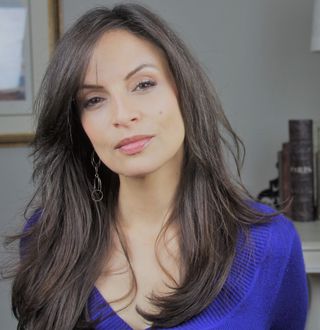
Whether you're raising funding or inviting a new friend to lunch, hitting "send" on that email can trigger your brain to start questioning your performance.
- Did I make a grammar or spelling mistake?
- Was the email too short or too long?
- When will the recipient reply?
- Did I communicate my message effectively?
- Should I have sent this message in Slack instead?
Email is a common trigger for social and productivity-related anxiety. Avoiding sender's remorse can cause you to overthink how the recipient will perceive you, which can slow you down, hinder your flow and productivity. The worst part: Overthinking kills your happiness.
We want your email writing experience to be fast, simple, and rewarding — so let's banish the fear of sender's remorse!
If you want to learn how to make writing professional (and personal) emails one of your superpowers, keep reading. We'll discuss how to speed up email writing and provide top tips for writing effective emails that help you achieve your goals.
How to write a good email: 7 tips for writing emails with speed, productivity, and impact
Never underestimate the power of a good subject line
Look around, headlines are everywhere — on billboard ads, newspaper articles, cereal boxes, and everywhere a publisher wants to capture attention.
An email subject line is no different.
Effective email subject lines capture attention and allow the recipient to learn what the email will be about quickly.
How do you create a compelling subject line?
- Make it informative yet concise. Subject lines shouldn't be longer than 10 words; in most cases, 6-10 words is the sweet spot.
- Include the recipient's first name to increase open rates.
- Use a few power words to tell the recipient what the email is about (follow up, opportunity, kindly respond, important, due).
Use the subject line to pack in as much detail as possible to get the reader to open the email, without going overboard.
Once done, it's time to introduce yourself.
Further Reading: How to introduce yourself in an email?
Keep emails short, concise, and focused
People don't have time to read long emails. The average American has 1,602 unread emails in their inbox. But with an email client like Superhuman, your inbox will consistently show zero unread emails!
Get started with SuperhumanKeep your professional emails concise and avoid over-communicating. That means getting to the point as quickly as possible and including all pertinent details without adding unnecessary information.
Self-edit your emails
Self-editing emails might sound ominous, but it's easier than you think. Edit your emails 3x and pare down copy with each edit.
- Shoot for no more than 75-100 words.
- Cut out filler words such as "you know", "needless to say", "honestly", and "literally". If when you eliminate the word, the sentence does not lose its meaning, it was probably a filler word.
- Eliminate redundancies.
Keep emails focused on only one topic
If you have more information to share with the recipient on an unrelated topic, consider sending another email to keep the thread organized. For example, if you're messaging a coworker about an upcoming event, resist the urge to ask them about that overdue report! Send a second email instead.
Make emails easy to scan and read
Add bullets and bolded words to make emails easier for recipients to consume. Use space efficiently and leverage white space to your advantage.
Take a look at these two email examples. We improved upon the first email by focusing on the topic, adding bullet points, whitespace, and bolded words in the email body to highlight important details and eliminate unnecessary information.
As a busy human, you don't have time to write long emails, and you don't have time to read them either! When reviewing your email inbox, prioritize reading the emails you care about so you can get through your inbox faster.
Superhuman AI detects and highlights your most important emails rather than marking them as spam. Separate your most important emails from newsletters and ads, and get through your inbox faster!
Get started with SuperhumanWrite emails faster: use templated responses
One way to speed up your email communicate without sacrificing quality is to use templates responses.
Create a templated response or email message for any messages you find yourself using regularly. Things like:
- Email signatures
- Email salutations
- Greetings
- Client / customer replies
- Attachments you regularly send
Superhuman's Snippets feature allows you to create a template once and use it repeatedly. Insert pre-written text snippets such as subject lines, sender emails, or even large blocks of text or entire emails. Plus, make templates for your attachments, CC and BCC recipients, and emojis!
Put yourself in the recipient's shoes
Recipients will assign a tone to the email they're reading, but they often misinterpret work emails as more emotionally negative or neutral than intended.
To counteract the perceived negativity and come across in your email communication as intended, we recommend the following:
Try to be objective
Read your email aloud and put yourself in the mind of the recipient. Imagine the recipient feeling negativity and notice what words or phrases could trigger miscommunication.
Is the overall tone coming across as cold or bossy? Or is it warm and inviting?
Consider the professional communication exchange below as an example. The writer is trying to get the status of a project from the recipient and uses exclamation points to soften the message. The problem is that the tone and style of the wording could contribute to the reader's anxiety. The improved version gets the same message across but softens the message and puts the reader at ease.
The problem with the first example is that the recipient can take the exclamation points as abrupt — and if he is stressed or anxious about the project, this communication style could cause more angst.
A small compliment or warmth will lower the reader's defenses and allow them to perceive the rest of the message correctly. Also, offering help shows the reader you want to partner with them and are rooting for their success.
Also, before you send, re-read your email with your goal in mind. By making our ask clear in the subject line and reiterating it in the opening line of the text in the second email example, we are more likely to accomplish our goal, which is to get an update from the recipient.
Color your email with pleasantries
Extend genuine warmth — especially if your business email includes constructive criticism.
In addition to compliments, start or end the messages with welcoming phrases. Here are some ideas:
- I hope you had a great weekend!
- It's lovely to connect!
- Looking forward to connecting
- Love what you're doing here
- Thank you for your great work!
Focus on the recipient
When writing emails, especially if you're in a position of authority, keeping the focus more on the recipient's needs and potential reactions can help you come across with the right tone and write emails that achieve your intended goal.
When used in command statements, words such as "need" or "now" can come across as bossy and inflammatory.
Adding phrases such as "It's best" or "I'd like you to" to action statements can soften the tone considerably. Similarly, turning commands into questions or adding the word please can do the same.
Below are some examples of before and after sentences you might find in an email exchange. Notice how the recipient would feel after reading each statement and how much different the response would be after reading the improved version.
The recipient should never leave the exchange feeling inferior or anxious. Some recipients' reactions are outside of our control, but a little warmth and re-wording can make a big difference.
Proofread and double-check
We're all about a fast email experience here at Superhuman, but we still recommend proofreading every email before you hit send!
Proofread once or twice for:
- Grammar/spelling/typos
- Tone/style — Was the tone right for the audience?
- Misinterpretations — Read your email objectively. Could any of it be misconstrued or misinterpreted? Could your real intent be misunderstood? See the previous section for more detail.
Can you unsend an email if you hit send by accident? With an email client like Superhuman, you can! Simply hit Z (or tap Undo) after sending an email.
Feeling confident? Send an email instantly with zero delay. Tap Instant Send ⚡or hit Cmd+Shift+Z:
Make it easy for the recipient to respond (without asking follow-up questions)
What's worse than a 10-message email thread that buries each message deeper and deeper with each reply? Not much except, maybe an 11-message email thread.
Avoid long email threads by providing enough information in your emails to satisfy the topic, so recipients don't have any follow-up questions. When necessary, end your emails with calls to action so the recipient knows what you're expecting for a response. This keeps email threads short and tidy.
- Ask direct questions that warrant a straightforward answer
Example: Are you coming to the gala on July 5th? - End with a concise call to action
Example: Respond by July 5th; Click here to schedule a meeting time, etc. - Clearly state your intent (as early in the email as possible)
Example: How is the event planning coming along?
While we might despise long email threads, reading long emails that rob our precious time is worse. When writing emails, provide enough details but stick to the topic, and only the topic.
How many details are too many details? It depends. If you're providing information to your team members about tickets for an upcoming work event, you might not need to start a conversation about the upcoming planning meeting in the same email.
Be productive: schedule email sending and follow-up
50%+ Americans check their in the morning before going to work.
But what if you want to send an email at 3 PM, but you prefer to check your inbox in the morning since that's when you're the most productive?
Instead of worrying about that email all day until 3 PM, schedule it to send at your preferred time.
With Superhuman, scheduling an email is as easy hitting Cmd+Shift+L. Write your email, and then tell Superhuman when you want to send it.
Optional Reading:
Write better emails: The definitive PDF guide
Like anything, email is a skill. Just like there are great public speakers, or people who make killer presentation decks, there are those who've gotten the art of emailing down to a science. They know how to send emails at the right time, how to sign off — and how not to end emails. They might make it look effortless, but there's a lot of thought that goes into a perfectly executed email.
We've distilled email expertise from powerful communicators and combed through email best practices across nearly every category — from product updates and follow up emails, to investor pitches, recruitment emails, and other high importance communications.
Now, we're sharing tips and templates so you too can be that person in someone else's inbox — and get the results you want, no matter the use case.
Meet the experts:
- Camille Trent, Head of Content, Dooly
- Eddie Shleyner, Founder, VeryGoodCopy
- Rahul Vohra, CEO, Superhuman
- Kristen Hayward, Head of People, Superhuman
This ebook includes:
- Cold outreach templates, including subject lines, introductions, follow ups, and sign offs. Plus, advice from copywriting experts.
- Superhuman case study on a cold email that landed us our dream hire!
- Superhuman's internal comms framework for hybrid teams.
Optional: Is it better to talk in person over sending an email?
There are times when a phone call or in-person meeting is more appropriate. Forgo email for a more personal encounter if the topic can potentially offend, enrage, or cause a negative or painful emotional response from the recipient. On the phone or in person, you can respond in the moment and keep emotions level.
When might it be better to respond in person or over the phone?
- Firing an employee
- Ending a contract with a client
- Communicating significant life changes (moving away, health status changes)
- Giving the recipient "bad" news, personally or professionally
On the flip side, there are times when we recommend email correspondence.
Sitting in an hour-long meeting discussing an issue that could have been solved in 5 minutes? Sent off a quick Slack message before you rushed off to lunch, but you didn't have the time to get in enough detail? In these cases, email might be a better choice.
End sender's remorse (finally) with Superhuman
Superhuman can help you speed up your email management, develop better email habits, and achieve more from your day. With a slew of features that make writing and sending emails easier and more rewarding, Superhuman has you covered.
Superhuman features:
- Instant Intro: Respond to introductions faster.
- Snippets: Create templates you can quickly customize, and send and re-send.
- Split Inbox: Declutter your inbox and prioritize emails that matter the most.
- Send Later: Schedule your sends, so your email arrives with perfect timing.
- Meeting scheduling: Schedule meetings with one click. No more switching back and forth from your calendar to email.
- Keyboard shortcuts: Fly through your email inbox without touching your mouse.
And much more!
Come and see what the buzz is all about. Try Superhuman, and organize and speed up your email experience.
Get started with Superhuman



